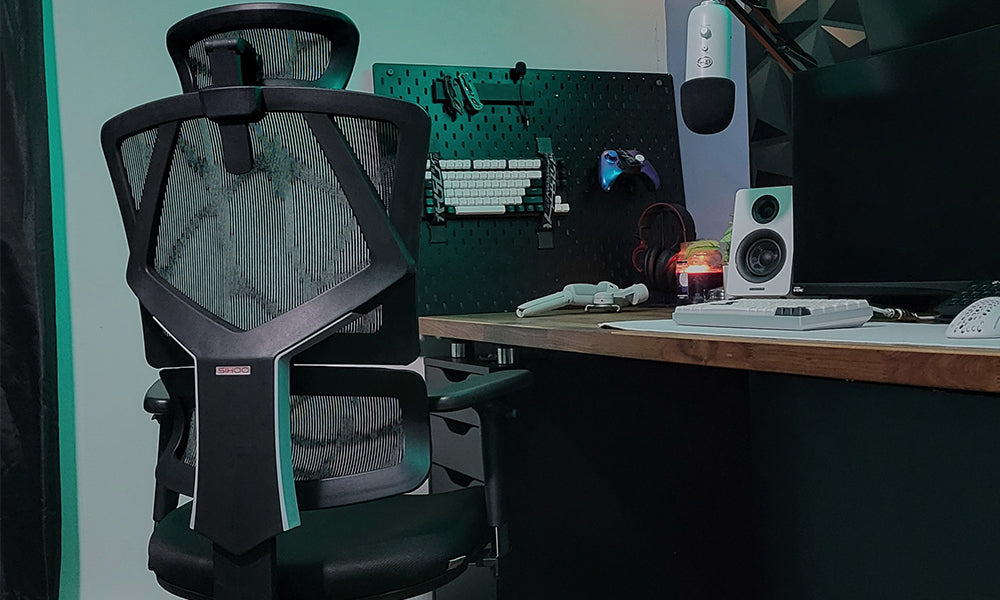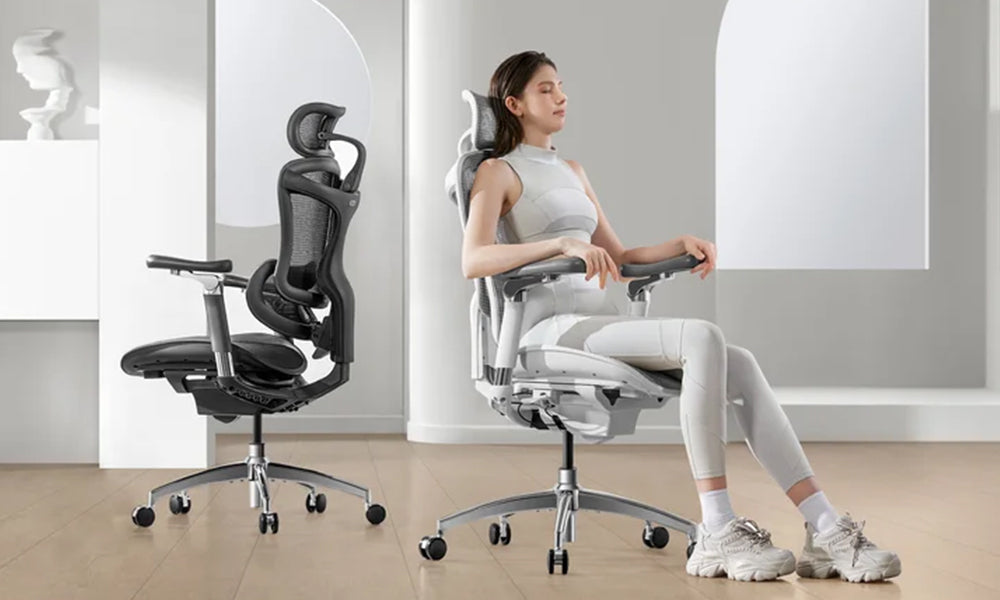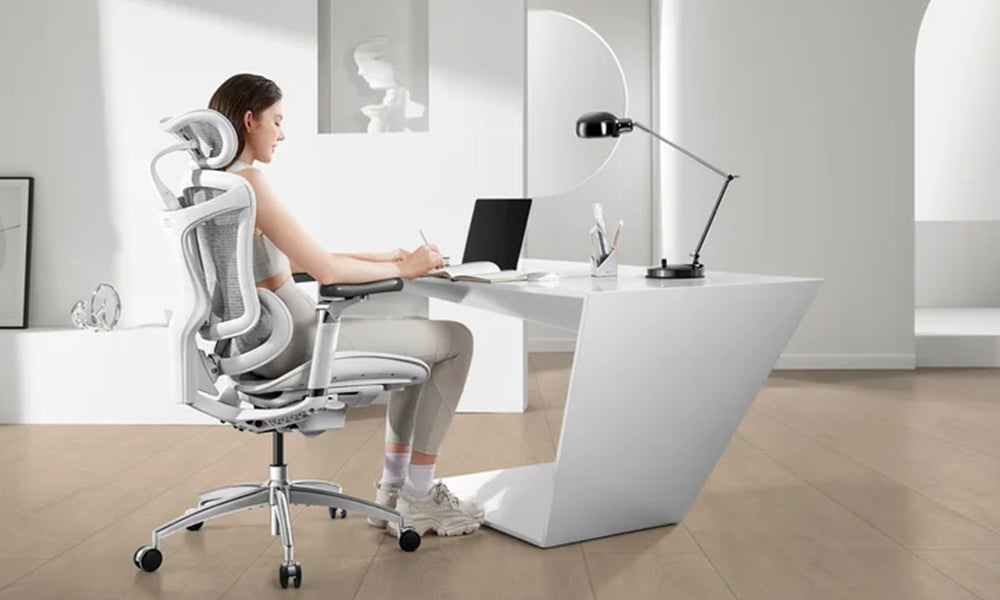Selecting the right office chair is a crucial decision that can significantly impact your productivity, comfort, and overall well-being. With the average office worker spending around 40 hours per week seated at their desk, it's essential to invest time and effort into finding the perfect office chair that suits your needs. In this comprehensive guide, we'll walk you through the key factors to consider when choosing a new office chair to ensure you make an informed and comfortable choice.
Ergonomics: The Foundation of Comfort
When it comes to office chairs, ergonomics should be your top priority. Ergonomic chairs are designed to support your body's natural posture, reducing the risk of discomfort, pain, and long-term health issues. Here are some essential ergonomic features to look for:
1.1 Adjustable Seat Height
A chair with adjustable seat height is essential to accommodate users of various sizes. Ideally, your feet should rest flat on the floor with your knees at a 90-degree angle.
1.2 Lumbar Support
Lumbar support is crucial for maintaining the natural curve of your lower back. Look for chairs with adjustable lumbar support to cater to your specific needs.
1.3 Seat Depth and Width
The seat depth and width should provide adequate support and allow you to sit with your back against the chair while leaving a few inches of space between the seat's edge and your knees.
1.4 Armrests
Adjustable armrests can help reduce strain on your shoulders and arms. They should be at a height that allows your elbows to rest comfortably at a 90-degree angle.
1.5 Reclining Function
A reclining function with multiple tilt positions can enhance comfort and flexibility. Being able to change your position throughout the day is essential for reducing discomfort and fatigue.
1.6 Headrest
A headrest provides support for your neck and head, reducing strain and promoting a more relaxed posture. Ensure it is adjustable to accommodate different user heights.
Material and Padding
The materials used in your office chair significantly impact its comfort, durability, and maintenance. Consider the following aspects:
2.1 Fabric vs. Leather vs. Mesh
Each material has its pros and cons. Fabric chairs are breathable but may stain. Leather chairs are durable and stylish but can get hot and sticky. Mesh chairs are breathable and easy to clean but may lack padding.
2.2 Padding
The level of padding varies from chair to chair. It's essential to find the right balance – too much padding may lead to discomfort, while too little may result in pain.
2.3 Easy Maintenance
Consider how easy it is to clean and maintain the chair. Look for materials that resist stains and are simple to wipe down.
Style and Aesthetics
Your office chair should not only be comfortable and functional but also complement your office's style and decor. While aesthetics may be a secondary consideration, it's still important to choose a chair that suits your workspace.
3.1 Color and Design
Select a chair color and design that matches the overall aesthetics of your office. Neutral colors like black, white, or gray are versatile and blend well with most decors.
3.2 Chair Size
Ensure that the chair's dimensions align with the available space in your office. Consider the chair's height, width, and depth to prevent it from overwhelming or appearing too small in your workspace.
3.3 Adjustability
Aesthetics and adjustability need not be mutually exclusive. Many modern office chairs combine style and functionality, so look for one that suits your taste and provides the features you need.
Weight Capacity
Every office chair has a maximum weight capacity. It's crucial to choose a chair that can safely support your weight to ensure durability and comfort. Check the manufacturer's specifications and ensure there is a comfortable margin between your weight and the chair's capacity.
Mobility and Base
The base and mobility features of your office chair can significantly impact your day-to-day work experience.
4.1 Wheels
Most office chairs come with casters or wheels, allowing you to move easily around your workspace. Ensure the wheels are suitable for your flooring type to prevent damage.
4.2 Swivel Function
A swivel function enables you to rotate and reach various areas of your desk without straining or overstretching.
4.3 Stability
Choose a chair with a stable base to prevent wobbling or tipping over, which can be both uncomfortable and hazardous.
Budget Considerations
Office chairs come in a wide range of price points. While you may be tempted to opt for a low-cost option, it's essential to consider your chair as an investment in your well-being and productivity. Higher-quality chairs often provide better comfort, durability, and ergonomic features, which can pay off in the long run by reducing discomfort and preventing health issues.
5.1 Setting a Budget
Determine a reasonable budget based on your needs and preferences. While you don't need to break the bank, be prepared to invest in a chair that meets your requirements.
5.2 Value for Money
Look for chairs that offer the best value for your budget. Compare different models, read reviews, and consider long-term comfort and durability when making your decision.
User Reviews and Recommendations
Before making a final decision, it's helpful to read user reviews and seek recommendations from colleagues, friends, or online communities. Real-world experiences can provide valuable insights into the comfort and performance of specific chairs.
6.1 Online Reviews
Websites like Amazon, Reddit, and specialized chair review sites offer in-depth reviews from actual users. Pay attention to both positive and negative feedback to make an informed choice.
6.2 Recommendations
Ask for recommendations from people you trust who may have had positive experiences with a particular chair. Personal referrals can be a great way to find a chair that suits your needs.
Warranty and Customer Support
Consider the warranty and customer support provided by the chair manufacturer. A good warranty can give you peace of mind in case of any issues with your chair. Additionally, responsive customer support can be invaluable if you encounter problems or have questions about your chair.
7.1 Warranty Length
Check the warranty length and the coverage it offers, such as parts replacement and repairs. Some chairs come with extended warranties, reflecting the manufacturer's confidence in their product's quality.
7.2 Customer Support
Read reviews and testimonials about the manufacturer's customer support to gauge their responsiveness and helpfulness.
Try Before You Buy
If possible, try out the chair before making a purchase. This allows you to assess its comfort, adjustability, and ergonomic features firsthand. Many office supply stores have showrooms where you can test chairs, or you can visit larger furniture stores to explore a broader range of options.
Environmental Considerations
Lastly, it's worth considering the environmental impact of your chair. Sustainable choices not only benefit the planet but can also align with your company's values and sustainability goals.
8.1 Recyclable Materials
Look for chairs made from recyclable or environmentally friendly materials. Many manufacturers are now using sustainable practices in their production processes.
8.2 Certifications
Check if the chair has received any certifications, such as those from the Forest Stewardship Council (FSC) or GREENGUARD for low chemical emissions.
Conclusion
Choosing the right office chair is a decision that can significantly impact your comfort, productivity, and long-term health. Prioritize ergonomics, consider the material and style, and ensure the chair suits your specific needs.
Weight capacity, mobility features, budget considerations, and the feedback of other users are all essential factors to take into account when choosing an office chair. Additionally, evaluating the warranty and customer support options, trying the chair out in person, and considering environmental factors can help you make a well-informed decision. By carefully considering all these elements, you can select an office chair that not only supports your work but also enhances your overall well-being.



